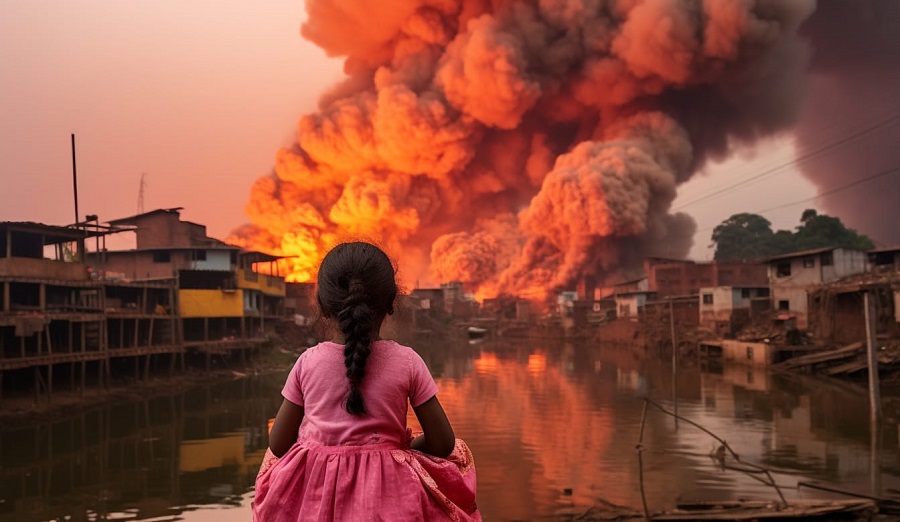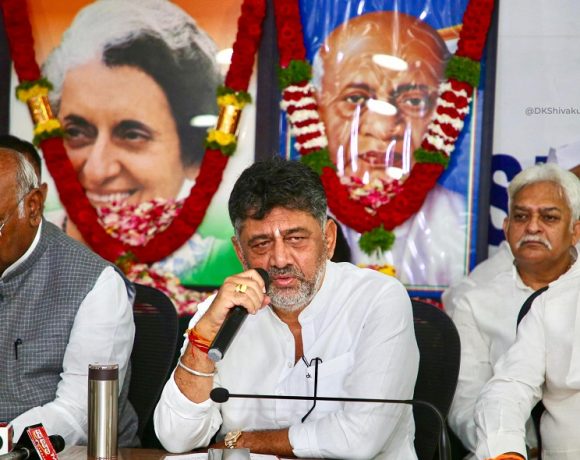
Murshidabad Burned, Delhi Waited: Will AFSPA Be the Last Word on Bengal?
West Bengal is no stranger to political turbulence, but in recent years, it has steadily descended into a pattern of unchecked communal violence, state apathy, and judicial firefighting. The latest eruption in Murshidabad has once again exposed the hollow scaffolding of the state’s law-and-order machinery. What should have been a localized protest against the Waqf (Amendment) Act quickly spiraled into mob attacks, arson, and death—another entry in Bengal’s growing list of communal disasters. And as always, the police hesitated, the government evaded, and the judiciary was forced to intervene. Is it any wonder then that more and more voices are now asking: should AFSPA be imposed in West Bengal?
The list of violent flashpoints over the last decade is not only long but disturbingly similar in nature. In 2017, Baduria and Basirhat districts witnessed widespread rioting after a Facebook post sparked religious outrage. The mobs set fire to homes, torched vehicles, and battled with the police who were completely overwhelmed. In 2023, Ram Navami processions in Howrah turned into battlegrounds with stone-pelting mobs attacking processions. In 2024, Sandeshkhali erupted not due to communal tension per se, but the political-communal nexus was undeniable. Women alleged systemic sexual exploitation and land grabs by a ruling party strongman, which led to massive protests and violence. Malda in March 2025 saw Hindu-owned shops targeted and destroyed by mobs under the guise of religious agitation, and the state machinery stood aside like a spectator. And now, Murshidabad burns—again—because the state allowed it to.
Each of these incidents shares a common thread: the near-total absence of proactive governance. Police intervention is always reactive, slow, and often politically constrained. The Mamata Banerjee government has consistently played down the communal nature of these riots, often blaming “outsiders” or the opposition instead of addressing the core issues. Even in the recent Murshidabad violence, it was not the state that acted to bring calm—it was the Calcutta High Court that ordered the deployment of central paramilitary forces. A sitting Chief Minister needing judicial nudging to protect her own people should be a cause for national concern.
And yet, even the central paramilitary forces deployed under court orders are hamstrung. The CAPFs, unless operating under extraordinary legal provisions, do not possess independent policing authority. In routine law-and-order deployments, they can’t arrest without warrants, they can’t enter premises unassisted, and they can’t use force unless specifically directed. Even when the judiciary steps in to authorize their deployment, they remain bound by procedural limitations and must coordinate with the local police—who, in Bengal’s case, are frequently politicized or inactive.
This is where the Armed Forces (Special Powers) Act, or AFSPA, comes into the conversation. It is, undeniably, a hard law. But it is also a law that grants the armed forces the operational independence they need in deeply disturbed regions. Under AFSPA, forces can arrest without a warrant, conduct searches, seize weapons, and use necessary force, including lethal force if needed. Most importantly, they operate with legal immunity, ensuring that swift action isn’t delayed by bureaucratic red tape or political interference.
So how is AFSPA imposed? Legally, either the Governor of the state or the President of India, through the Ministry of Home Affairs, can declare an area as “disturbed” via a notification in the official Gazette. This can be based on recommendations from intelligence agencies, reports from district magistrates, or suo motu assessment by the central government. Once this designation is made, the region comes under AFSPA jurisdiction, and the forces are empowered accordingly. In the current Bengal context, multiple districts—Murshidabad, Malda, Sandeshkhali, and parts of North 24 Parganas—have witnessed repeated breakdowns of civil order. By all legal and operational definitions, they already qualify as disturbed areas.
But imposing AFSPA is not just a legal act—it’s a political one. The strained relationship between the TMC-led state government and the BJP-led central government has left Bengal caught in the crossfire. Mamata Banerjee accuses the Centre of communalizing every incident; the Centre accuses her of minority appeasement and lawlessness. Meanwhile, the only thing rising faster than the death toll is the communal mistrust. Hindus in affected areas are fleeing their homes. Police officers are seen standing silently as mobs run riot. And what should have been an administrative response has become a theatre of political blame games.
This is the cost of political paralysis. This is what happens when the Centre hesitates to act, and the state refuses to. The ground reality is clear: law and order in parts of Bengal have crumbled. The judiciary cannot be the permanent crisis manager. And the paramilitary forces cannot operate with one hand tied behind their back.
If peace and order are to be restored, the Modi government must now do what it has avoided so far. It must hold talks with the state, set a clear deadline for restoring normalcy, and lay down an ultimatum: act or allow us to act. If the state fails, the Centre has both the moral authority and constitutional power to step in.
No one wishes to see AFSPA imposed in a state not traditionally associated with insurgency. But when the police obey political instructions instead of upholding the law, and when courts are the only functioning bulwark against chaos, AFSPA is no longer an outrageous option—it becomes the last one.
And now, all eyes are on Delhi. Will Modi and Shah dare to do what the state won’t?


















